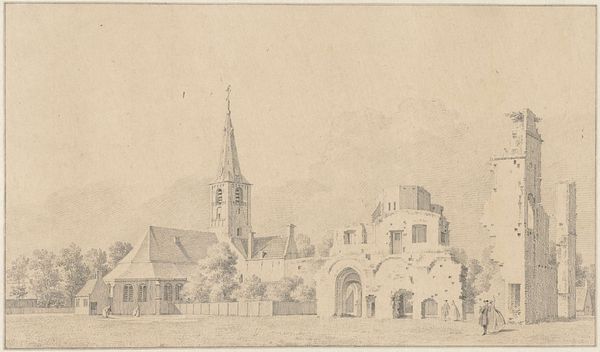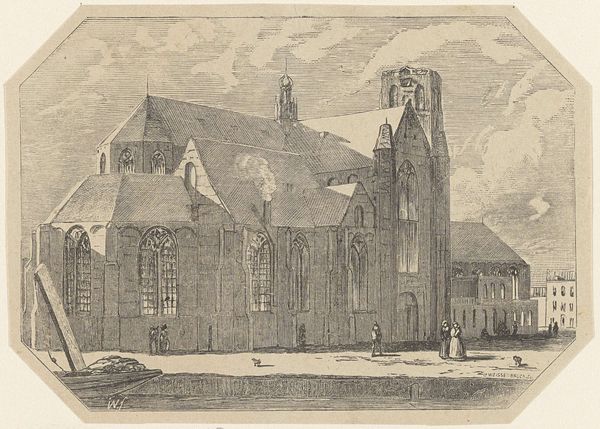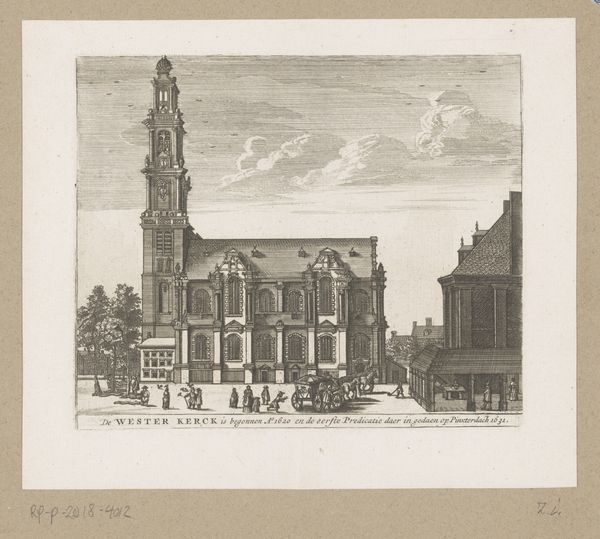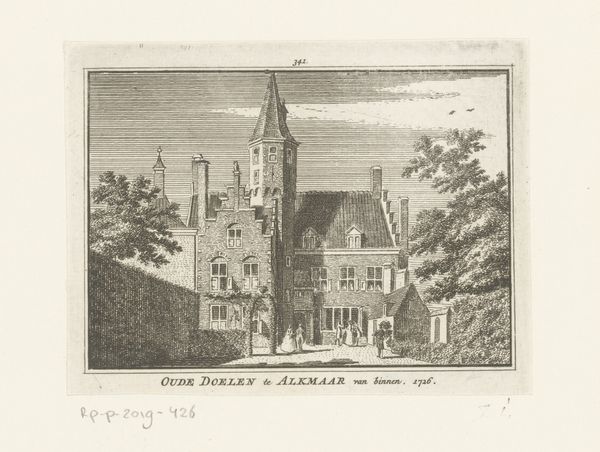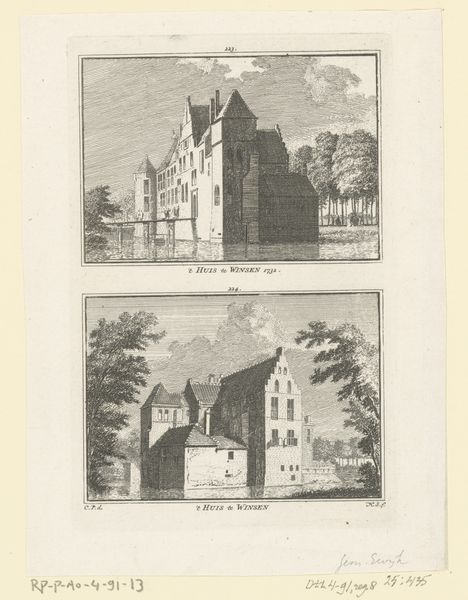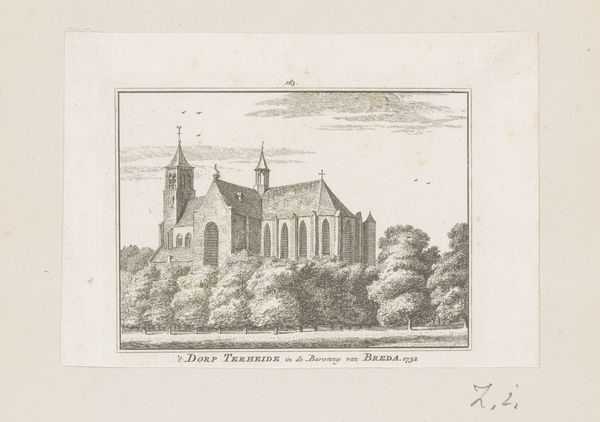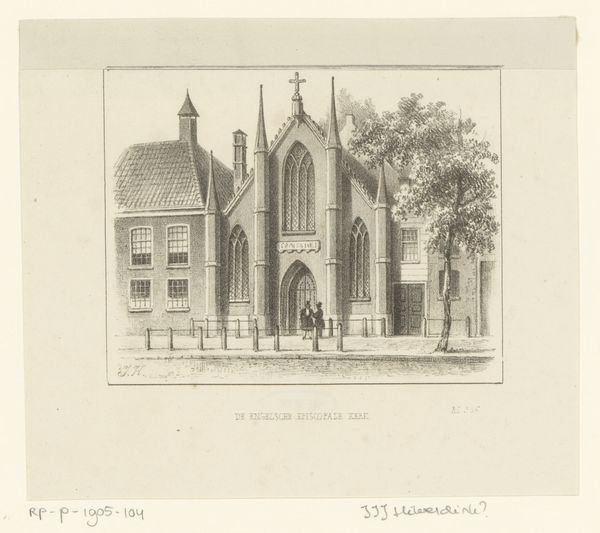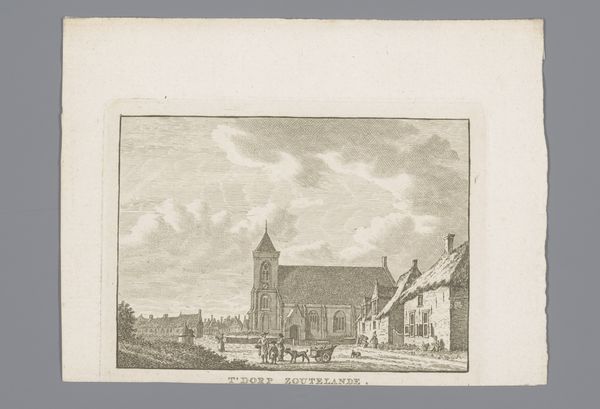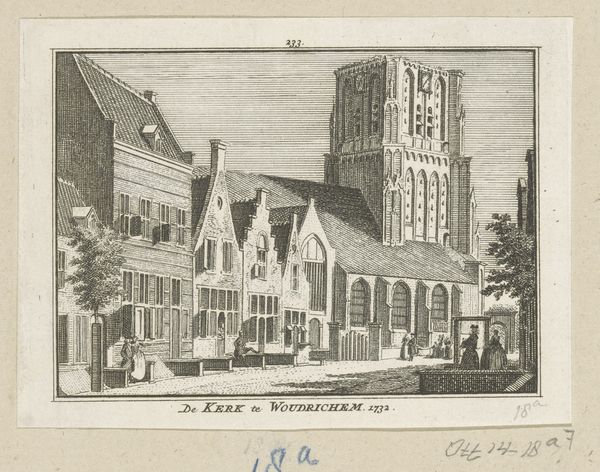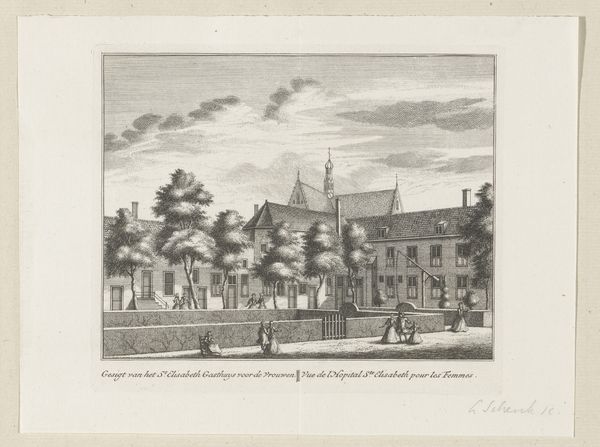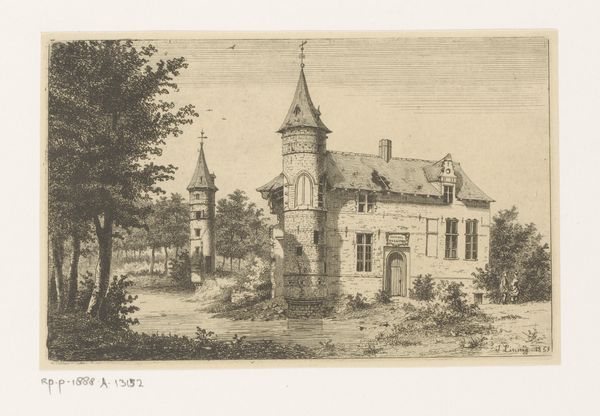
Gezicht op de Grote Kerk (Bartholomeüskerk) te Schoonhoven, 1733 1757 - 1792
0:00
0:00
hendrikspilman
Rijksmuseum
Dimensions: height 81 mm, width 104 mm
Copyright: Rijks Museum: Open Domain
Editor: Here we have Hendrik Spilman’s etching of the Grote Kerk in Schoonhoven, created sometime between 1757 and 1792. The detail is quite impressive. What can you tell me about it? Curator: Spilman's work gives us a glimpse into 18th-century Dutch society. It’s a seemingly simple cityscape, but think about what it omits and what it chooses to highlight. For whom was this image made, and what narrative does it construct? The placement of the church, a symbol of authority and perhaps even oppression, within the frame is very telling. What social role does the church play within the town of Schoonhoven? Editor: So, you're suggesting the image is making a statement about power structures within Dutch society? Curator: Exactly. Consider the broader context. This print comes from a period marked by social and political upheaval, even within the relatively stable Dutch Republic. Think about the burgeoning merchant class and their relationship to the established religious institutions. Where are the merchants in this picture? Are they represented or conspicuously absent? How does this image reflect the tensions of the time? Editor: I see what you mean. Focusing on what’s *not* shown sheds a different light on the etching. It also makes me think about the solitary figure with the dog; are they intended to represent a kind of marginalized individual? Curator: Perhaps. Or perhaps they're just incidental. But consider how their marginality in the image reflects broader social inequalities. This etching isn’t just a pretty picture; it’s a document reflecting the power dynamics of its time. Editor: Thanks, I've never considered approaching a landscape this way. Curator: By analyzing its socio-political context, we gain a richer understanding of Spilman’s choices and the potential meanings embedded within this seemingly straightforward cityscape. It pushes us to think critically about representation and its inherent biases.
Comments
No comments
Be the first to comment and join the conversation on the ultimate creative platform.
